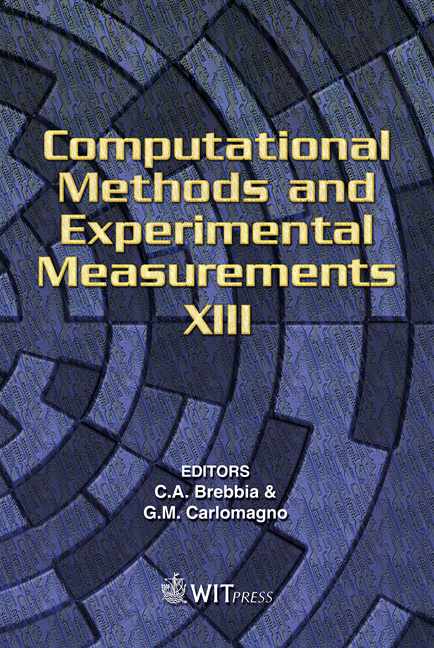Evaluation Of Experimental Procedures For Confined Concrete Columns Using 3D Finite Element Analyses
Price
Free (open access)
Transaction
Volume
46
Pages
10
Published
2007
Size
750 kb
Paper DOI
10.2495/CMEM070251
Copyright
WIT Press
Author(s)
H. O. Köksal, C. Karakoç, Z. Polat, T. Turgay & Ş. Akgün
Abstract
This paper presents the results of the early stages of both a continuing experimental work on the square confined concrete columns and their 3D finite element modeling based on the isotropic damage theory in order to establish a realistic approach for the confinement pressure. Based on the axial behavior of four RC columns with a 200 mm square cross section tested under concentric loading, existing experimental data and procedures in the literature are evaluated. As demonstrated from the comparison of the FE analysis and the test results, obtaining a uniform axial loading and deformation state is questionable. Keywords: confinement pressure, reinforced concrete column, finite element, isotropic damage theory, geometrical defects. 1 Introduction The compressive strength of RC columns increase with increasing confining pressure. The confinement mechanisms are transverse reinforcements such as stirrups or spirals, FRP wraps, and steel jackets, etc. extensive research on the axial behavior of confined concrete has been carried out since the pioneering study of Richardt et al. [1]. The constitutive model for confined concrete based on the experimental findings plays an important role in the pushover analysis of RC structures. There are some frequently cited models (Hognestad [2], Kent and Park [3], Sheikh and Uzumeri [4], Mander et al. [5], Saatcioglu and Razvi [6]) to predict the peak stress or the stress–strain curve of confined concrete. Only the latest two
Keywords
confinement pressure, reinforced concrete column, finite element, isotropic damage theory, geometrical defects.





